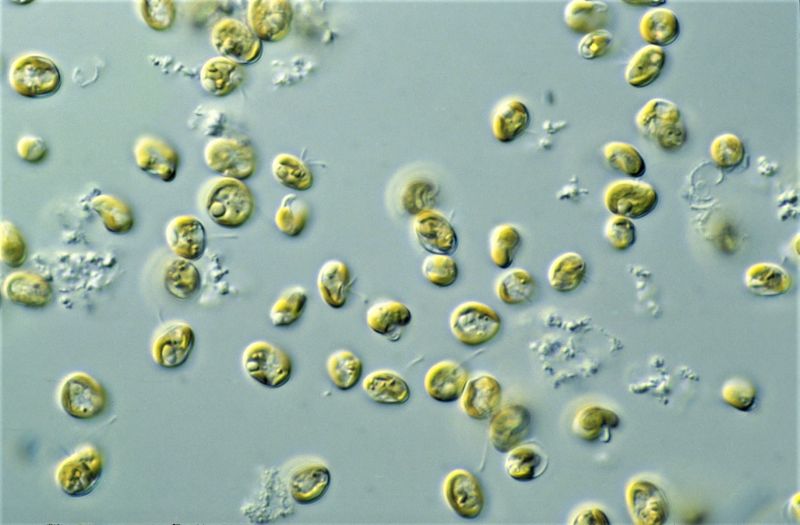Production Of Microalgal Biomass Using Wastewater Reduces Antibiotic Resistance To Environment
Published on by Water Network Research, Official research team of The Water Network in Academic
Technologies harnessing waste streams as resources for energy production are in demand. A promising example of such an approach is utilizing municipal wastewater for bioenergy production via microalgal biomass growth in photobioreactors.
Wastewater use as a substrate in photobioreactors has proved economically feasible since large amounts of water and nutrients required for microalgal biomass production are readily available in this waste stream. In turn, algal growth results in an enhanced removal of nutrients from wastewater and reduces the amount of energy needed for wastewater oxygenation.
 In this type of combined wastewater treatment/bioenergy production system, algae and bacteria are mutually beneficial: the algae produce oxygen, which the bacteria can use to break down organic compounds to carbon dioxide, which the algae can then use in photosynthesis to produce more oxygen. The efficiency of photobioreactors for both algal biomass production and wastewater purification depends on the sustainable living conditions of microbes. For this reason, high-strength wastewaters (very rich in nutrients) need to be diluted to ensure there are no ill effects on the system. Most commonly, either water from a drinking water system or water from a conveniently-located natural water body is used for this purpose.
In this type of combined wastewater treatment/bioenergy production system, algae and bacteria are mutually beneficial: the algae produce oxygen, which the bacteria can use to break down organic compounds to carbon dioxide, which the algae can then use in photosynthesis to produce more oxygen. The efficiency of photobioreactors for both algal biomass production and wastewater purification depends on the sustainable living conditions of microbes. For this reason, high-strength wastewaters (very rich in nutrients) need to be diluted to ensure there are no ill effects on the system. Most commonly, either water from a drinking water system or water from a conveniently-located natural water body is used for this purpose.
While the fate of major nutrients in photobioreactors is quite well known, the knowledge of emerging contaminants such as pharmaceuticals, nanomaterials, or antibiotic-resistant bacteria and genes encoding for antibiotic resistance is limited. The World Health Organization (2014) has recognized the emergence of antibiotic resistance in particular as a global health concern of the 21st century. Municipal wastewater is a major source of antibiotic resistance determinants.
In particular, conventional activated sludge process based wastewater treatment systems are well-recognized reservoirs that serve as gene material transfer stations and dissemination nodes between anthropogenic and natural environments. However, there are no official norms for antibiotic resistance determinants concentrations in wastewater treatment plant discharges. Consequently, we face the situation where millions of antibiotic resistance genes leave the wastewater treatment plant in every milliliter of purified water and enter the natural environment or, in the worst case scenario, our freshwater supplies.
We were able to show in laboratory-scale photobioreactors that this wastewater treatment technology can be more efficient compared to conventional wastewater treatment plants in controlling antibiotic resistance spread through treated municipal wastewater to natural environments.
The results suggest a different antibiotic resistome reduction mechanism in photobioreactors compared to conventionally activated sludge-based wastewater treatment plants. The reduction rate of antibiotic-resistant bacteria and antibiotic resistance genes in conventional wastewater treatment systems depends on the general reduction of the whole bacterial community abundance during the wastewater treatment. In photobioreactors, the reduction efficiency of antibiotic resistance determinants is instead connected to the changes in microbial community composition during wastewater treatment. A major driver leading to changes in microbial community composition was rising pH level directly caused by intense algal growth. In other words, it seems that the more algae we can produce in photobioreactors the better antibiotic resistance determinants removal is achieved.
The effects of two commonly used diluents for adjusting municipal wastewater concentration, namely tap water from the drinking water system and lake water from a local water body, were also evaluated. The lake water originated from a local yacht harbor and, upon analysis, revealed signs of heavy human impact. In fact, the antibiotic resistance genes abundances in lake water substantially exceeded levels usually found in natural water bodies and were instead similar to discharges of wastewater treatment plants. Although lake water contributed diverse and abundant antibiotic resistome (adding to the resistance levels of wastewater) to photobioreactors, it proved to be more beneficial for wastewater dilution than tap water. Lake water addition promoted algal growth more than tap water which in turn led to higher reduction capacity of antibiotic resistance determinants.
In most efficient lake water and municipal wastewater mixtures utilizing photobioreactors, the antibiotic resistome reduction was so substantial that the resistomes of the reactor discharges were more similar to water environments with slight human impact than to the discharges of wastewater treatment systems or even the lake water itself used for dilutions. The latter showcases somewhat unexpected additional benefit of using photobioreactors for wastewater treatment as it simultaneously enables to reduce the antibiotic resistome of municipal wastewaters and natural waters with a strong anthropogenic impact.
These findings are described in the article entitled Reduction of antibiotic resistome and integron-integrase genes in laboratory-scale photobioreactors treating municipal wastewater, recently published in the journal Water Research . This work was conducted by Hiie Nõlvak, Marika Truu, Kristjan Oopkaup, Kärt Kanger, and Jaak Truu from the University of Tartu, Estonia, and Ivo Krustok and Emma Nehrenheim from the Mälardalen University, Sweden.
Source: Science Trends
Media
Taxonomy
- Industrial Wastewater Treatment
- Wastewater Treatment
- Environment
- Algae
- Algae Treatment
- Antibiotics